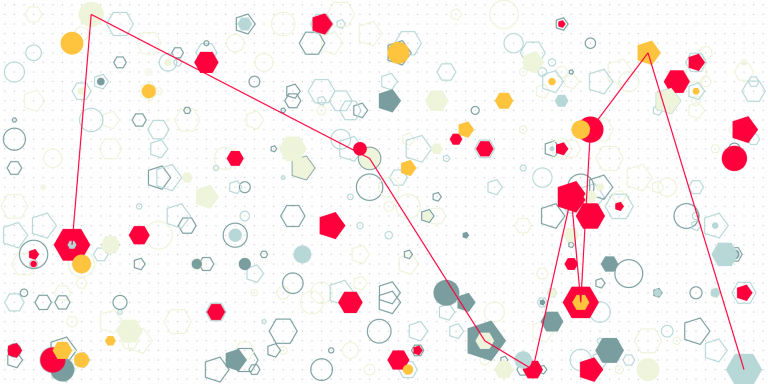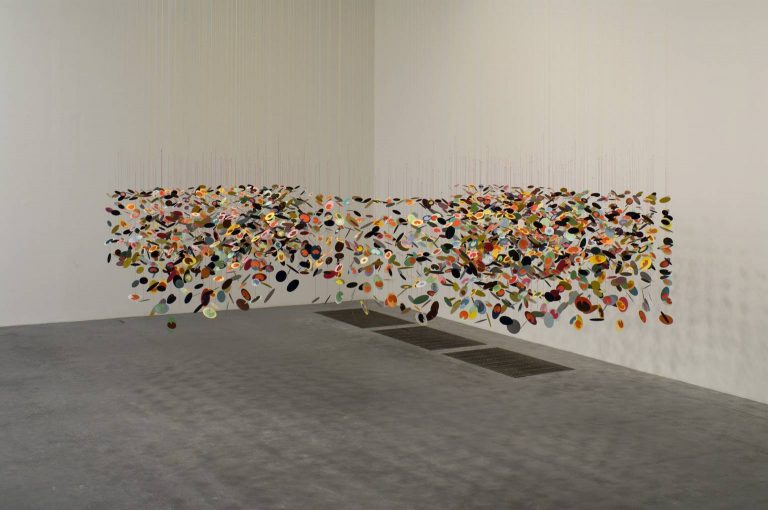Plastic or Rigid Definition? Which to Prefer?

When you read a definition, which is more useful, to assume that it is rigid or that it can change, that there’s some plasticity? When you propose a definition, are you also intending it to stay as proposed, that is, to be rigid? Or, are you proposing it to help progress towards a better definition of the term? In both situations, reading or proposing, the choice of preference for rigidity or plasticity will influence attitudes. In the case of reading or using a definition, it will influence your assumptions and therefore your decisions and actions. In the case of proposing, it will influence the attitudes of others.

There was a rather technical debate in ecology research, on the definition of the term ”ecosystem engineer”. It is interesting here not for its contributions to ecology, but for other reasons:
- It was a proposal of a new term and its definition.
- The proposal led to a debate, which went through a few iterations, which illustrates revisions of a term’s definition.
- The proposed definition was picked up in a different debate, on whether such proposals help or harm the development of technical, specialized knowledge in a discipline.
- It was not clear if the authors of the new term wanted to standardize their definition immediately, i.e., wanted it to be rigid, and that specific point was also subsequently debated.
In 1994, Clive G. Jones, John H. Lawton and Moshe Shachak, three scientists working on ecosystem change, proposed the term ”ecosystem engineer”. They offered the following definition.
”Ecosystem engineers are organisms that directly or indirectly modulate the availability of resources (other than themselves) to other species, by causing physical state changes in biotic or abiotic materials. In so doing they modify, maintain and/or create habitats. Autogenic engineers change the environment via their own physical structures i.e., their living and dead tissues. Allogenic engineers change the environment by transforming living or non-living materials from one physical state to another, via mechanical or other means.” [4]
Beavers, according to them, qualify as ecosystem engineers:
”That is they are allogenic engineers, taking materials in the environment (in this case trees, but in the more general case it can be any living or non-living material) and turning them (engineering them) from physical state 1 (living trees) into physical state 2 (dead trees in a beaver dam). This act of engineering then creates a pond, and it is the pond which has profound effects on a whole series of resource-flows used by other organisms. The critical step in this process is the transformation of trees from state 1 (living) to state 2 (a dam). This transformation modulates the supply of other resources, particularly water, but also sediments, nutrients etc.”
In a later article [1], Alexander Flecker presented research on how a fish, Prichilodus mariae, modifies its environment by ingesting sediment, and this in turn changes algal and invertebrate assemblages. He argued that Prichilodus is an ecosystem engineer.
Commenting on that work from Flecker, Mary Power argued that ”ecosystem engineer” is a value-laden term. For her, it subsumes intent [5]. Since intent to modify habitat is hard to attribute to Prichilodus, she argued that this was a case of ”habitat modification” instead. Prichilodus mariae isn’t an ecosystem engineer for her, and the definition of ”ecosystem engineer” is failing to be clear on the need for intent to be present.
Jones, Lawton and Shachak replied to Power, arguing against her interpretation of their definition for ”ecosystem engineer”.
”First, our definition of ecosystem engineering is not value-laden, and does not imply intent. Whether or not humans perceive intent when an organism (such as a beaver or a human) physically modifies the environment is not a scientific issue. It becomes the subject of scientific enquiry if questions are asked about feedbacks to the engineer. Engineering does not require a feedback, even though this often occurs. We made the explicit distinction between engineering that affects the fitness of the engineer (’extended phenotype engineering’; e.g. the effect of beaver dam on beaver) – which is what we construe Power meant by purpose – and ’accidental engineering’ (e.g. a cow hoof print that probably has no feedback effects on the cow).
Second, the term ’habitat modification’, if used to mean either a process or an outcome, is a much broader term, than ecosystem engineering by organisms. For example, habitats are often modified by abiotic forces. We see little point in being less precise when precise terms exist. It is also worth noting that our definition considers engineering to be a process, and thus any habitat modification / maintenance / creation / destruction that occurs is an outcome.” [3]
Two things stand out in the debate so far. Power raised an issue with the applicability, or scope of the definition, by arguing that the fish in question does not qualify as an instance of ecosystem engineer. In addition, her argument comes her understanding of the term ”engineer”, in which purposeful intent is a must. The defense from Jones, Lawton and Shachak is that they have a different understanding of the term ”engineering”, and so of ”engineer”. A legitimate question is if this disagreement and debate would have been any different, if Jones, Lawton and Shachak also gave their definition of ”engineering” alongside that of ”ecosystem engineer”. This touches on the very important question on the relationship between definitions of established terms, and definitions of new ones, and what to do about it when proposing a definition of a new term. If you are proposing a definition for some new term, and that definition mentions other terms A, B, and C which are not new, but have established definitions already, do you give their definitions alongside the new one, or do something else? I will return to this later.
Jones, Lawton and Shachak also remarked the following:
”Last, when we did ’coin the term’ ecosystem engineering, adding new ’buzzwords’ to the ecological lexicon was certainly not our primary purpose. Many of the interesting questions about the effects of species in ecosystems that were discussed by Power, were also the focus of our papers. Asking and answering interesting and important ecological questions is the primary purpose of our science. However, since many areas of ecology do not yet use unambiguous formal language (unlike the formulas of mathematicians, physicists and chemists), we must pay particular attention to terminology. After all, we cannot have scientifically meaningful dialogue unless we first agree on the definition of what we are studying.”
It is still not clear at this point if Jones, Lawton and Shachak were open to revising the definition they proposed. They did not do so in subsequent publications, at least not in response to Mary Power’s critique. Absence of clarity on this point, as well as their rejection of Power’s critique come back in a different article, where this exchange is used as an example of how to stifle innovation and growth of knowledge, specifically in ecology research.
Karen Hodges wrote the following in reaction to Jones, Lawton and Shachak’s claim that ecology needs to pay particular attention to terminology.
”Polysemy and synonymy may stimulate rapid growth in a field, vague terms are not necessarily problematic, and creating rigid definitions and standardized terminology too early may stunt the growth of a field. […] Strongly demarcated definitions and classificatory decisions can […] have serious negative effects on a discipline by constraining inquiry.” [2]
It is surprising to assume that to grow knowledge, you should stimulate polysemy and synonymy. Proposing a definition early, and making it precise, accurate, and clear, will stifle the development of new knowledge only if this definition comes bundled with the constraint that it cannot change, that it should be the standard. It is only if its authors refuse to remain open to criticism, or simply ignore it, that they will stifle innovation. The definition alone cannot do this. The benefit of making it precise, accurate, and clear, is that it will be easier to debate. This is not a tradeoff between precision and innovation, it is between premature standardization and openness to change the definition in light of new arguments and information.
The example, especially the reply from Hodges, suggest that it is important to be clear about what you want to accomplish when proposing a definition: Are you offering it as final, and thus want to see it accepted as-is, or is it to advance debate towards a more stable definition? In either case, being precise, accurate, and clear should help, not harm.
References
- Alexander S Flecker. “Ecosystem engineering by a dominant detritivore in a diverse tropical stream”. In: Ecology 77.6 (1996), pp. 1845–1854.
- Karen E Hodges. “Defining the problem: terminology and progress in ecology”. In: Frontiers in Ecology and the Environment 6.1 (2008), pp. 35–42.
- Clive G Jones, John H Lawton, and Moshe Shachak. “Ecosystem engineering by organisms: why semantics matters”. In: Trends in Ecology & Evolution 12.7 (1997), p. 275.
- Clive G Jones, John H Lawton, and Moshe Shachak. “Organisms as ecosystem engineers”. In: Ecosystem management. Springer, 1994, pp. 130–147.
- Mary E Power. “Estimating impacts of a dominant detritivore in a neotropical stream”. In: Trends in ecology & evolution 12.2 (1997), pp. 47–49.





